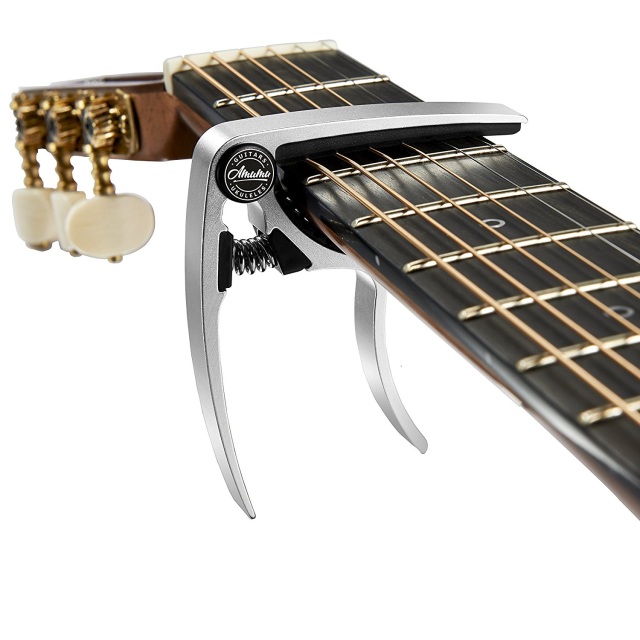

The first capo was patented by James Ashborn in the year 1850, and although there had been capo designs prior to that, Ashborn’s design stuck due to its lever and cam to tighten and apply pressure, holding it securely on the guitar neck. A capo will also slightly alter the timbre of the string as it essentially shortens the scale length of the instrument. That said any fretted notes are the same, so playing the seventh fret of the E string will still be a B note for any position at or below the seventh fret. The capo changes the pitch of the open strings in the chord shape, essentially having the same effect as retuning all of your strings up. It lets you play songs in different keys whilst still using your knowledge of open chord shapes, and opens up some interesting tonal varieties when using ringing open strings. The capo is typically fastened across all the strings of a guitar, ukulele, or very rarely, a bass guitar. The name capo derives from the Italian word capodastro which translates as the ‘head of fretboard’. When utilised in the correct manner, this bit of kit can really open up new sonic worlds for your guitar sound, completely changing tired old chord progressions and making barre chords and more complex shapes a lot easier to play. A Capo is a relatively inexpensive yet endlessly versatile tool that can massively enhance your creativity with your instrument.


 0 kommentar(er)
0 kommentar(er)
